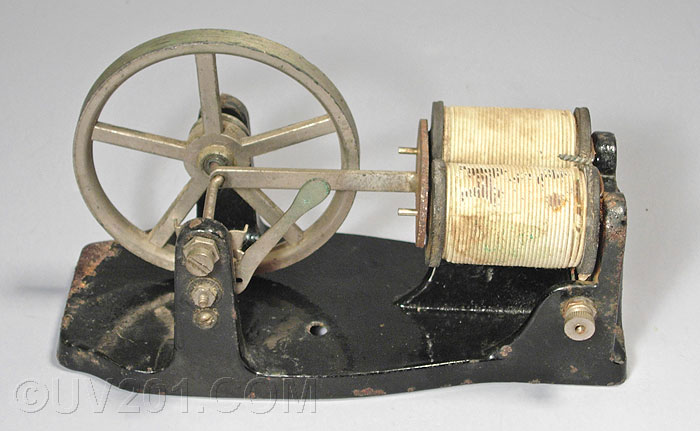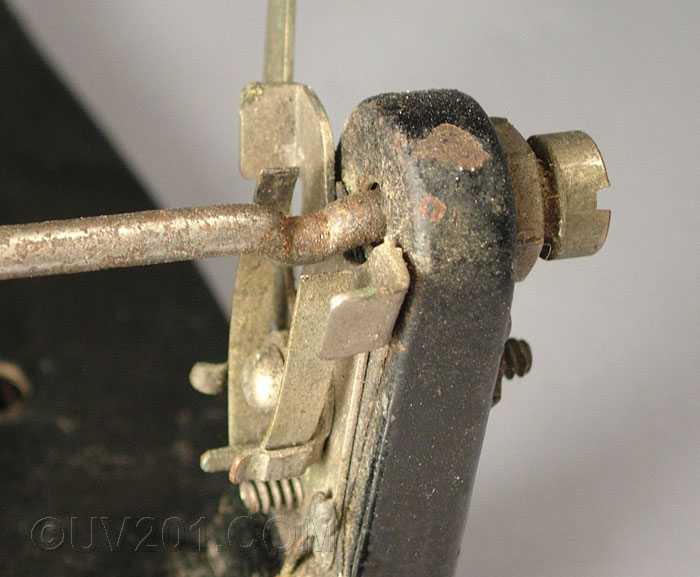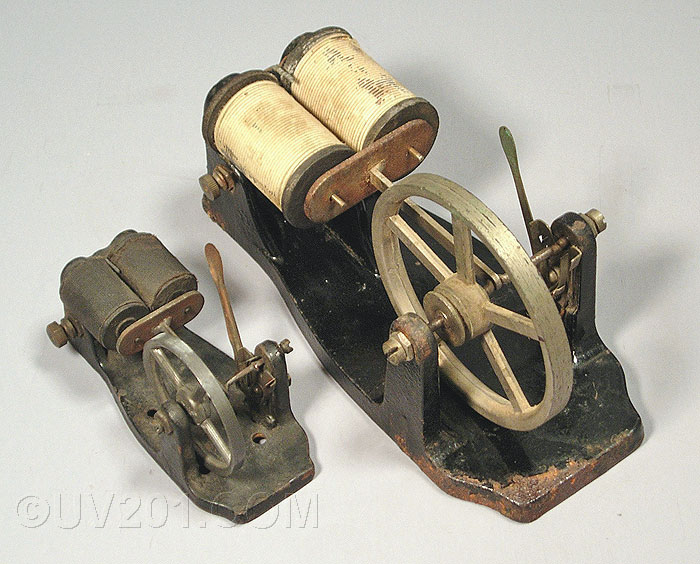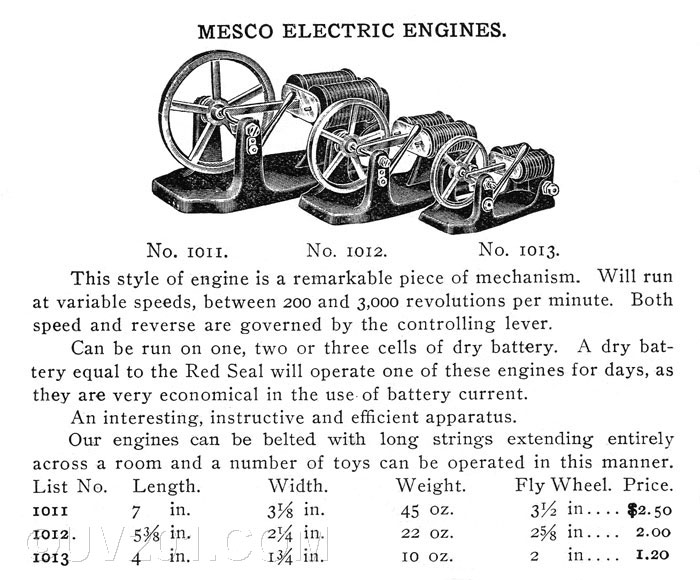|
MESCO Toy Electric Motors |
 |
| These interesting toy
electric motors were sold by the Manhattan Electric Supply Company (MESCO)
early in the 20th Century. There were three sizes, as can be seen
in the catalog entry below. The design is very simple and
resembles the single cylinder gasoline engines that were popular at the
time. That was, no doubt, the intention of the designer. A patent application for this design was filed on April 9, 1909 by Charles E. Avery, and patent no. 958,354 was issued on May 17, 1910. Later examples of this motor had the patent date stamped into the connecting rod. The ones shown here must predate the patent. Key to the operation of the motor is the crankshaft. The two throws on the crank are rotated by 90 degrees with respect to each other. One engages the connecting rod and the other forms a primitive commutator. The operating lever is used to select the direction of rotation and to control the speed. The motor is not self starting; the flywheel must be spun to start the motor. As it turns, contact is made through the commutator and the the armature (a steel plate) is pulled toward the coil assembly. This motion is passed through the connecting rod to the crankshaft, and keeps the flywheel turning. The brushes are made from a springy metal alloy, probably phosphor bronze, and as progressively more force is applied to them, they make contact with the crankshaft through a larger percentage of the shaft's rotation, and thus the coils are energized for a longer period of time. The greater amount of energy results in a higher rotational speed. Due to wear, the speeds promised in the catalog cannot be achieved, however I have been able to persuade the larger motor to run as fast as about 1000 rpm. and the smaller as fast as about 1500 rpm. There is not much torque, so any load will reduce the speed. |
 |
 |
| This view shows the largest and the smallest of the three motors. There are no manufacturer's markings on them except for the model numbers on the bottom of the cast iron bases. The coils on the large motor originally had the same fabric covering that is on the small one. Most of the original covering had fallen off (or was eaten by insects). |
 |
| This is a catalog entry showing these motors. I have only a portion of this catalog, and what is left of it isn't dated, but I believe it is from the 1912 to 1915 period. |